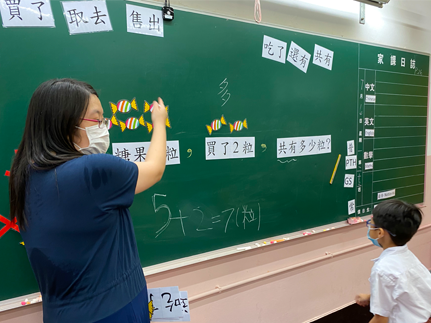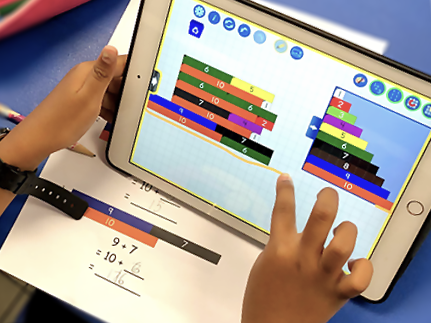Research project: Using storytelling as a pedagogical strategy for fraction concepts in multicultural classrooms
In schools where ethnic minority students are admitted, students have diverse cultural backgrounds. In most cases, English is adopted as the medium of instruction (EMI). In such multicultural and multilingual settings, teachers and students face various challenges as mathematical content potentially intertwines with cultural and linguistic issues (Xenofontos, 2016). Students who are not native English speakers learn the language of instruction whilst learning mathematics. They may have difficulties in understanding mathematical content presented merely in spoken forms (Elbers & de Haan, 2005). Moreover, a majority of EMI schools adopt local curriculum and textbooks. Students who are not raised locally may not find the contexts relevant to them and may want to bring the mathematical values of their cultures to classrooms (Gorgorio, 2006; Stathopoulou & Kalabasis, 2007). This suggests that not only do mathematics teachers in Hong Kong teach subject content (in their second or foreign language), they are also expected to respond to their students’ cultural and linguistic diversity.
To understand more about the aforementioned situation and the pedagogical implications, this research study will adopt the theories in second language acquisition (SLA) as the framework. In the data analysis, Krashen’s input hypothesis (1981), Swain’s output hypothesis (1985) and Cummins’ quadrant model (2000) will be used to investigate the effects of storytelling on second/foreign language learners’ learning of fraction concepts. Specifically, the researchers hope to answer the following research questions: (1) How does storytelling, as a pedagogical strategy, develop the early conceptualization of fractions for students in multicultural and multilingual classrooms? (2) To what extent does storytelling support English learners in understanding fraction concepts? (3) What are the students’ and teachers’ responses to the use of storytelling in mathematics classrooms?
Networking activities: Joint-school classroom design studies
Joint-school classroom design studies will be conducted in one or two participating schools, which have worked with the University Project Team in the previous projects and have experiences in conducting teaching experiments or, in a more systematic way, design studies. Two curriculum units (one per semester) will be examined, particularly on problems that teachers are familiar with and have the potential to change their perceptions about mathematics and their mathematical knowledge for teaching. Our goal is to build on and to refine the design or intervention from our previous projects for generalisability, thereby making the design and developments susceptible to theoretical analysis. Led by a CDO and supported by RA(s), each participating teacher is expected to join ONE classroom design study including joint-school collaborative lesson planning meetings and open lesson cum post-lesson discussions.
Teachers have to (1) rethink the nature of numbers and its instruction, for example, the development of number operations as sense-making and problem-solving rather than computation and formal algorithms; (2) develop tasks and instructional materials through joint-school CLPs, while the design study involves testing and revising conjectures and thus improving the associated design by conducting iterative cycles of design and analysis; (3) observe the enacted design during open lesson sessions. Ongoing analysis will be carried out while the study is in process. The team will have post-lesson discussion and debriefing meeting after each session to share and discuss what transpired in the classroom, and to plan for upcoming sessions by revising the design and considering other means of support. Video-recording of class sessions, field notes, students’ work, written assessments, students’ written self-reflections of their own learning (if any) will be documented, which allow the team to investigate how the tasks, the classroom activities, and the teachers’ discursive routines both supported and constrained the development of students’ understanding.








